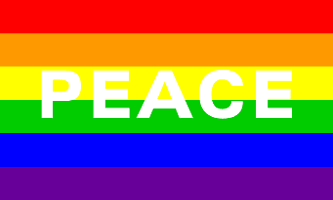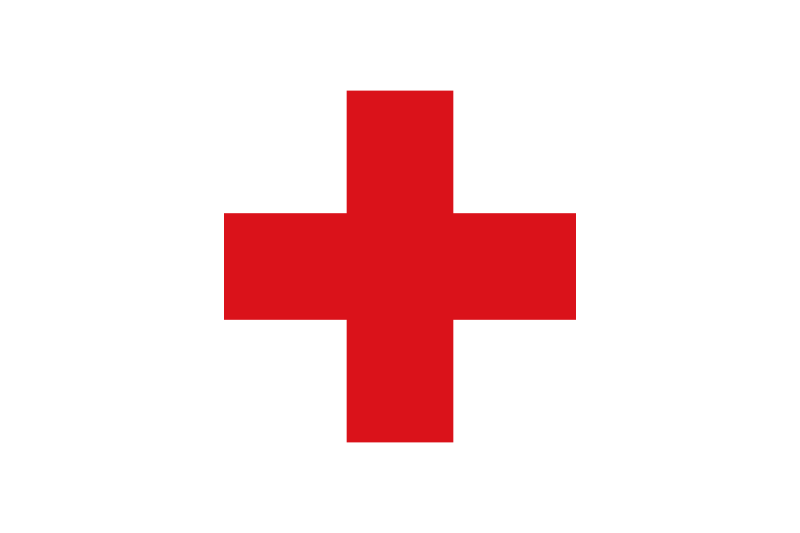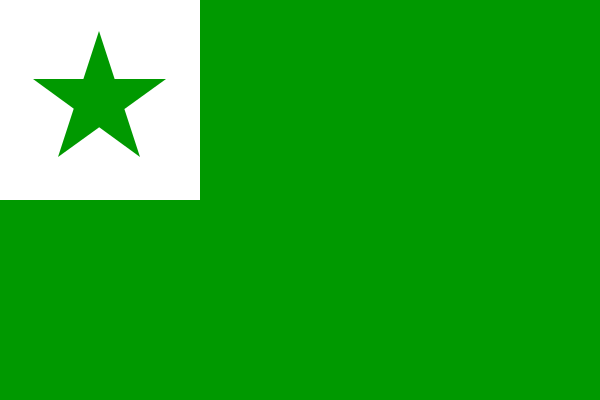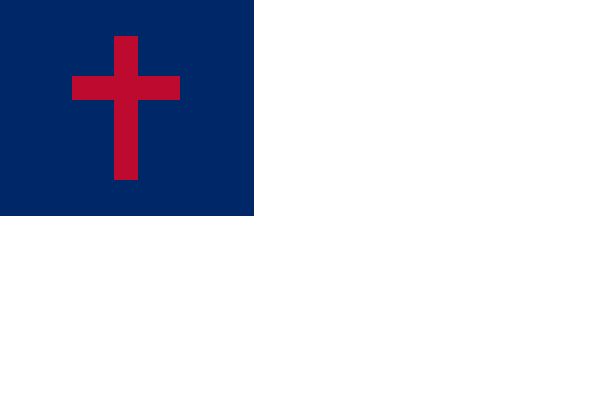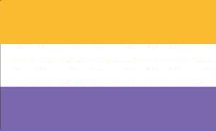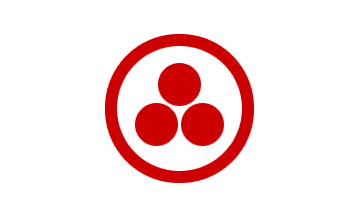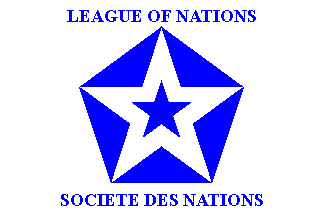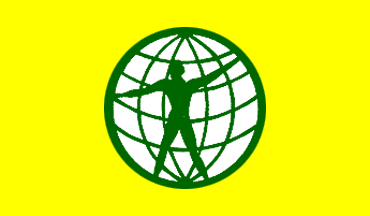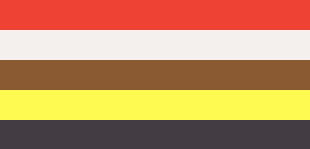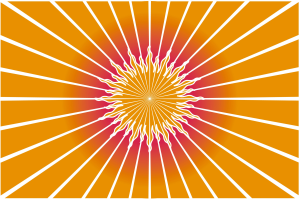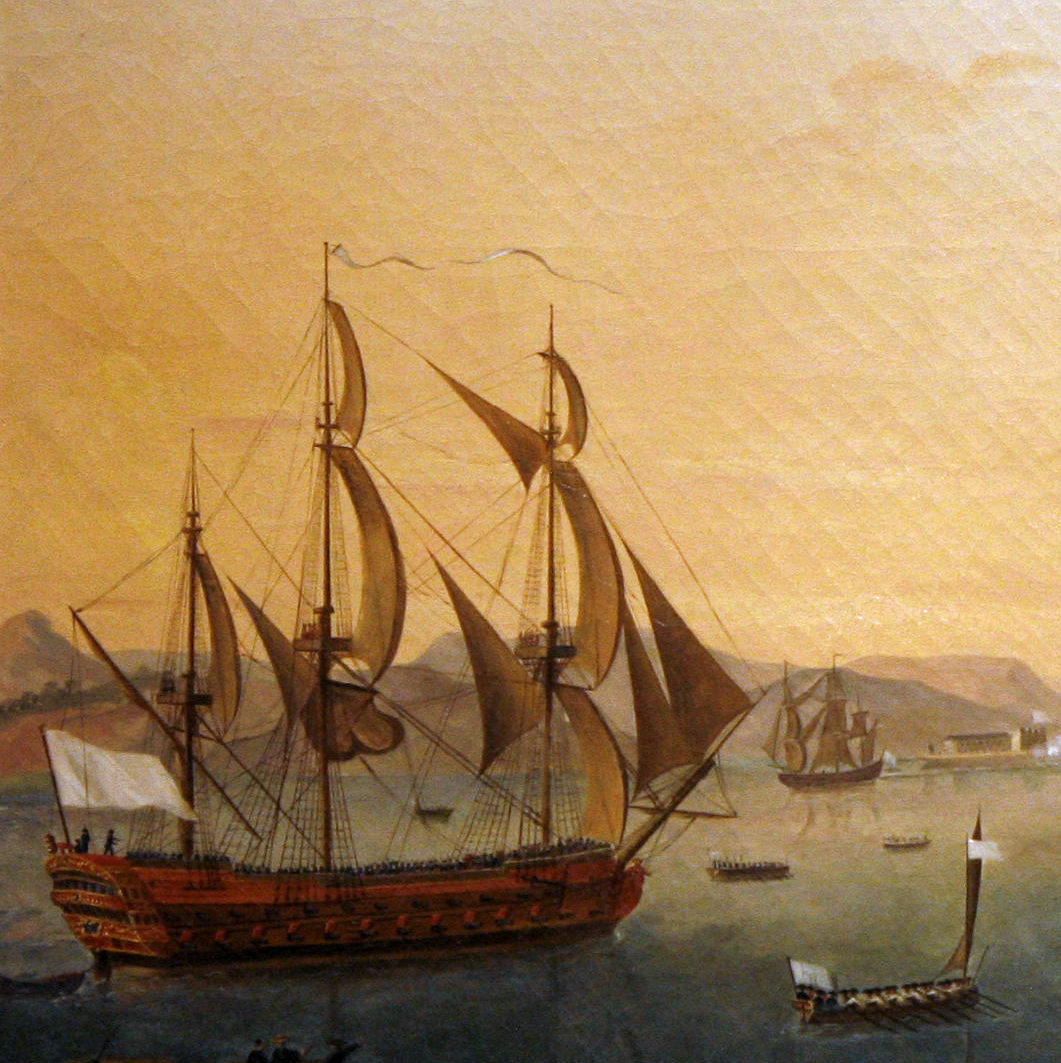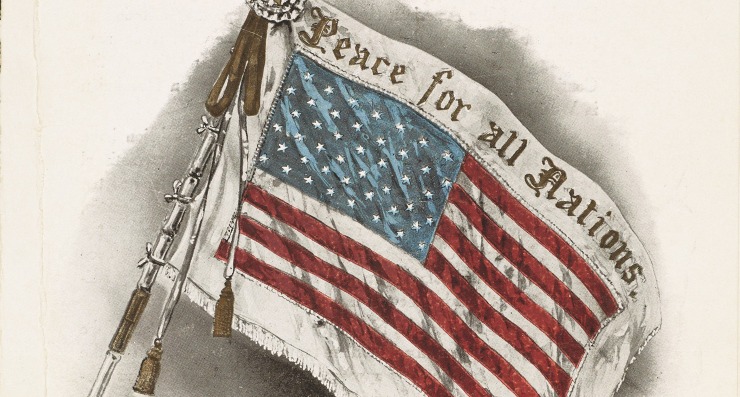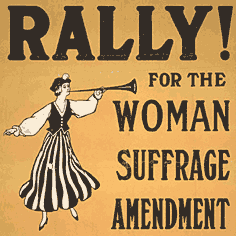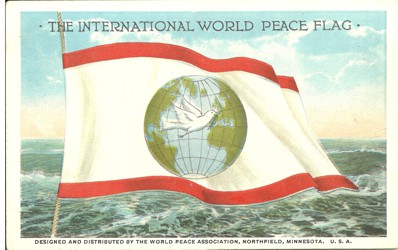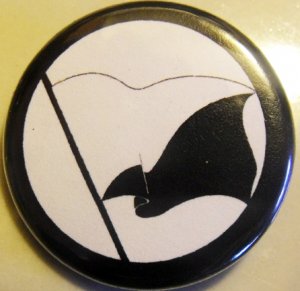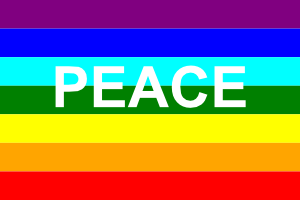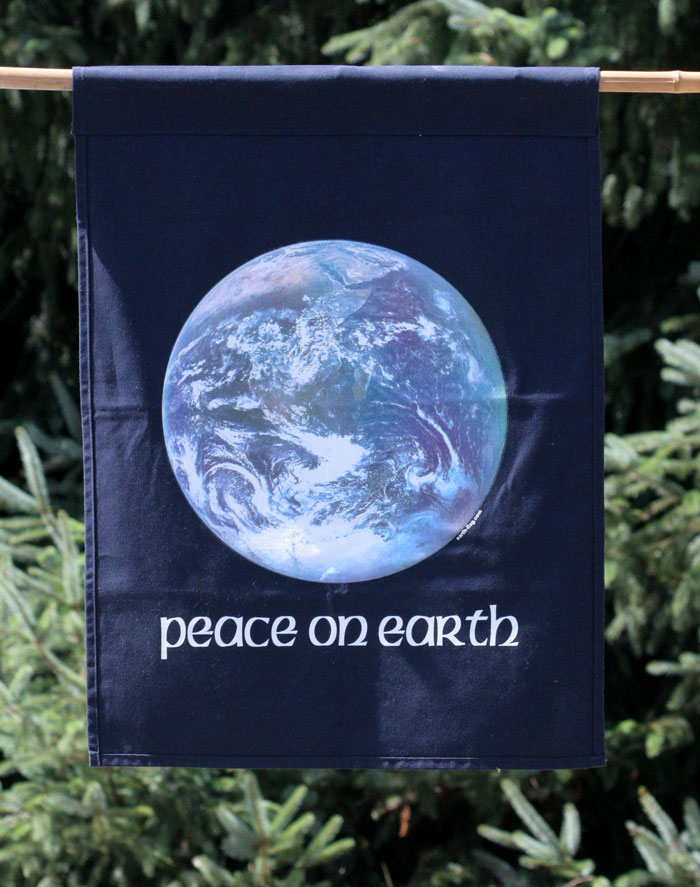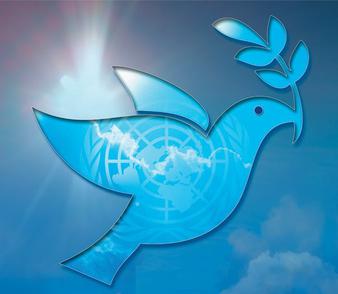 |  April 12, 1970 - Ecology Flag. "Ron Cobb created an ecology symbol which he published on November 7, 1969, in the Los Angeles Free Press & then placed it in the public domain. The symbol was formed by taking the letters 'e' and 'o', taken from the words 'environment' & 'organism', and putting them in superposition, thereby forming a shape reminiscent of the Greek letter Theta. Look magazine incorporated the symbol into an image of a flag in their April 21, 1970, issue. It widely popularized the theta symbol, which it associated with the Greek word thanatos (death) in light of human threats to the environment & atmosphere of the earth. The flag was patterned after the flag of the United States, and had thirteen stripes alternating green and white. Its canton was green with the ecology symbol where the stars would be in the US flag. /// One of the earliest recorded flyings of the Ecology Flag was in 1971. As a 16-year-old high school student, Betsy Vogel Boze, an environmental advocate & social activist [who] enjoyed sewing costumes & unique gifts, made a 3 x 5 foot green and white 'theta' ecology flag to commemorate the first Earth Day. Initially denied permission to fly the flag at C.E. Byrd High School in Shreveport, Louisiana, Vogel sought & received authorization from the Louisiana Legislature & Louisiana Governor John McKeithen in time to display the flag for Earth Day." April 12, 1970 - Ecology Flag. "Ron Cobb created an ecology symbol which he published on November 7, 1969, in the Los Angeles Free Press & then placed it in the public domain. The symbol was formed by taking the letters 'e' and 'o', taken from the words 'environment' & 'organism', and putting them in superposition, thereby forming a shape reminiscent of the Greek letter Theta. Look magazine incorporated the symbol into an image of a flag in their April 21, 1970, issue. It widely popularized the theta symbol, which it associated with the Greek word thanatos (death) in light of human threats to the environment & atmosphere of the earth. The flag was patterned after the flag of the United States, and had thirteen stripes alternating green and white. Its canton was green with the ecology symbol where the stars would be in the US flag. /// One of the earliest recorded flyings of the Ecology Flag was in 1971. As a 16-year-old high school student, Betsy Vogel Boze, an environmental advocate & social activist [who] enjoyed sewing costumes & unique gifts, made a 3 x 5 foot green and white 'theta' ecology flag to commemorate the first Earth Day. Initially denied permission to fly the flag at C.E. Byrd High School in Shreveport, Louisiana, Vogel sought & received authorization from the Louisiana Legislature & Louisiana Governor John McKeithen in time to display the flag for Earth Day."
|
 | Ecology Symbol - From John Shore: "For years now I’ve been waiting for Ye Old Ecology Symbol to once again become the ubiquitous cultural icon it was in the late ’60's and early ’70's. Has it, though, and I just … don’t know that? Has The Little 'e' That Could become huge again, by any chance? I figure by now it must have. Symbols from the ’60's seem quite the rage these days. And, except for the peace sign (which of course we now see everywhere), you can’t get more ’60's than the 'e' ecology symbol."
|
